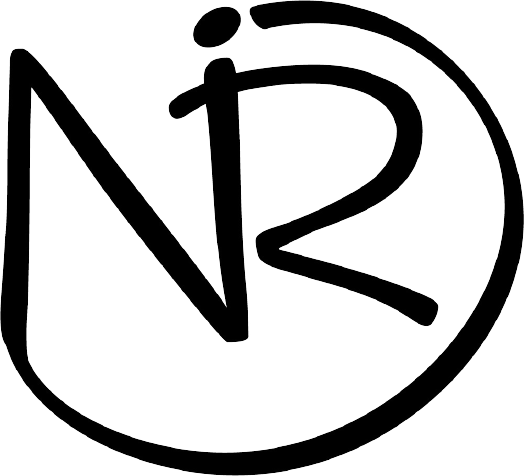The easiest way to remember digital marketing terminologies! Ever!


🤗Then this blog is for you, my dear!
🤩Also, if you are just starting in digital marketing.
😮These examples will help to understand the terminologies in an unforgettable way.
Firstly, digital marketing has not added any new words to the dictionary.
The terminologies, strategies, and mechanisms are all inspired by offline marketing, which has been present since the existence of civilization.
Hence, there are numerous similarities between digital marketing and offline marketing.

So use this relation to understand and remember the terminologies of the online marketing world.
By simply identifying the common dots.
As offline marketing began with civilization and is also the foundation of digital marketing.
Adding some examples below is the connection between the offline and online marketing world.
Which you will never forget!
Here, I am taking an example of a sweet shop (offline version) and an e-commerce shop (online version)
See one relation here!
Homepage of the Website = Stores Entrance
Online
The homepage of a website or landing page
where the visitor lands
Offline
The entrance of a shop,
or the first look of your website
A better homepage/landing page leads to a better visitor experience
Content of a Website = Store Goods
Online
Text, images, videos, etc all are the contents of the website to explain the service or products available
Offline
Product information given by the shopkeeper
Good content brings more engagement and conversion. And also help to build trust
Bounce Rate
Online
The percentage of people who leave the website without visiting another page of the same site.
Offline
The percentage of people who leave the shop without visiting other shop’s sections.
A high bounce rate means either the page content
or layout is not correct or the audience coming to the page is not relevant.
Pages per Session = Shop sections customer visited per visit
Online
The average number of pages visited
by a user on each visit.
Offline
The number of shops section customers
visited upon entering a store
A high number of ‘pages per session’ is achieved by linking the website pages thoughtfully
on the main header menu and in between page content
cost-per-click (CPC) = Amount paid for each visitor
Online
Advertisers pay for each click on their ads
Offline
Advertisers pay an agent/influencer
to bring a visitor to their shop
Your CPC bid should be aligned with the ROI
The objective of the ad = Campaign
Online
At the campaign level, the advertiser defines
the ad’s objective on most platforms.
i.e. reach, engagement, conversion.
Offline
A shopkeeper runs campaigns
of a discount for more sales and reaches via share
In any industry, there are three types and phases of a campaign
1. Awareness
2. Engagement
3. Conversion
Only after awareness, one can expect engagement and conversion after engagement. A smooth funnel.
Ad groups = Grouping of Stalls/Aisles
Online
Ads that are tied to a particular segment
or target demographic
Offline
Advertisement of similar stalls
and aisles together
Ad groups are a method of organizing ads with their audience
under a common topic or objective.
Click Through Rate (CTR) = Visitors Per Footfall (VpF)
Online
The percentage of the people who clicked the ad or post after seeing it
Offline
The percentage of the people who visited the shop after looking at the shop’s banner
A high CTR/VpF is indicative of an ad or link that is relevant to its target audience
Reach = Unique People who have seen the shop
Online
Total number of ‘unique individuals who have seen your content’ on the advertising platform
Offline
Individuals who have seen the shop
A good reach will have a good engagement and conversion
Impression = Total number of times people have seen your Shop
Online
The total number of times people have viewed the post or ad
Offline
The total number of times people have viewed the shop or it’s advertisement
High impression leads to a better recalling of the ad/post by the audience
Keywords = Power Words
Online
Keywords are used in advertising to target a particular audience
Offline
Power words help the audience to identify the shops they are looking for
Keywords or power words should be used in a natural and relevant manner
Unique pages view = Unique people visited the shop
Online
The number of unique people visited website pages
Offline
Total number of unique customers who visited the store
Unique pages view is proportional to the reach of your website’s post and ads
Cost per acquisition (CPA) = Customer acquisition expense
Online
Cost spent by an advertiser for each business, a purchase on a website or a form submission
Offline
The cost of acquiring customers through print or outdoor advertising
Low CPA means that the cost of acquiring a new customer or lead is low, a profitable return on investment
Cost per mile (CPM) = Cost per thousand impressions
Online
The cost of showing your ad to 1,000 unique people
Offline
The cost of printing and distributing leaflets to 1,000 people
In digital marketing, a low CPM mostly indicates that your ad is reaching a relevant audience
Frequency = Number of times a individual have seen the ad/post
Online
The number of times an advertisement is shown to the audience during a given time frame
Offline
The number of times an advertisement has been viewed by an individual in a retail store or public space.
By monitoring frequency and adjusting campaigns, marketers can optimize their advertising spend
Time spend per Sessions = Time spent inside store
Online
The time spent by a visitor surfing your website
Offline
The time spent inside the store per visit
Time spend on a website is proportional to the quality and arrangement of contents and commodities
By understanding these basics, you will have a solid foundation to navigate and excel in digital marketing.
Share this article with your friends who are new to the Digital Marketing industry and let’s grow together!
Share this blog
Next Step!
If you are looking forward to excelling in digital marketing communication, don’t miss out on this article on.
Push and Pull Advertising technique series.



